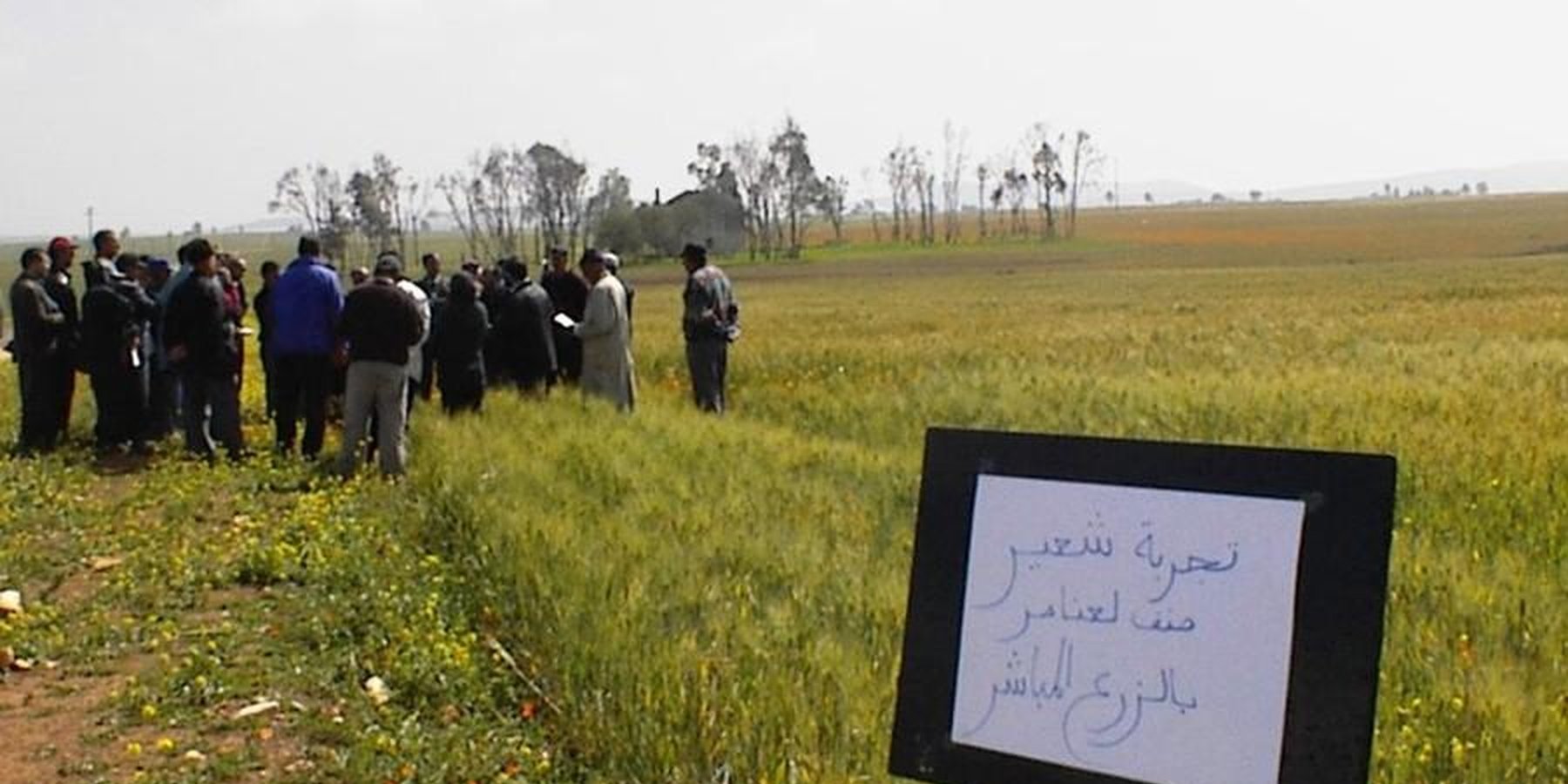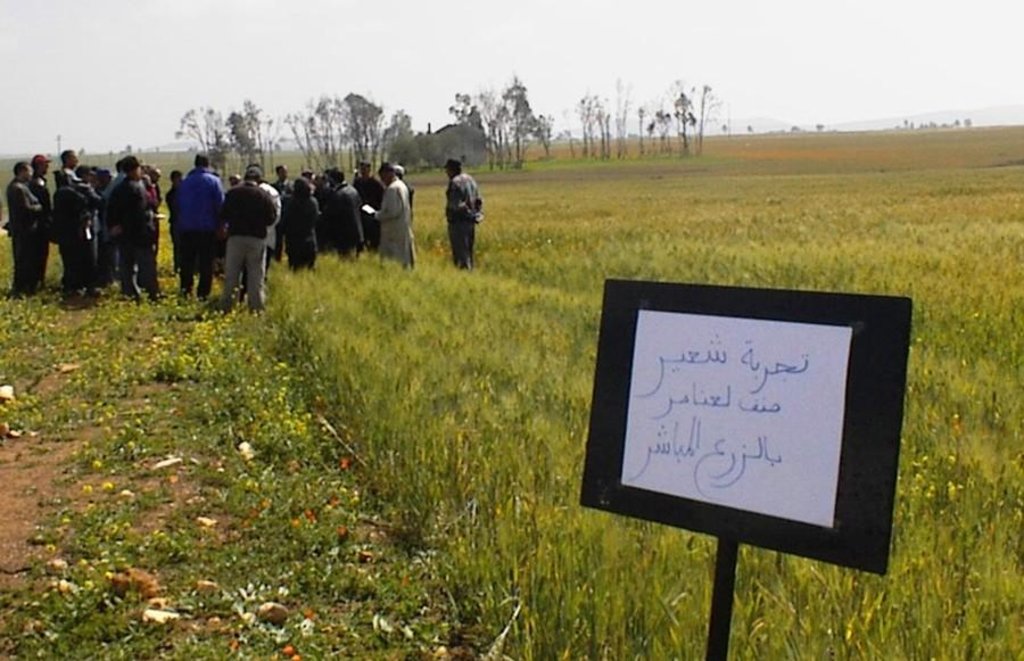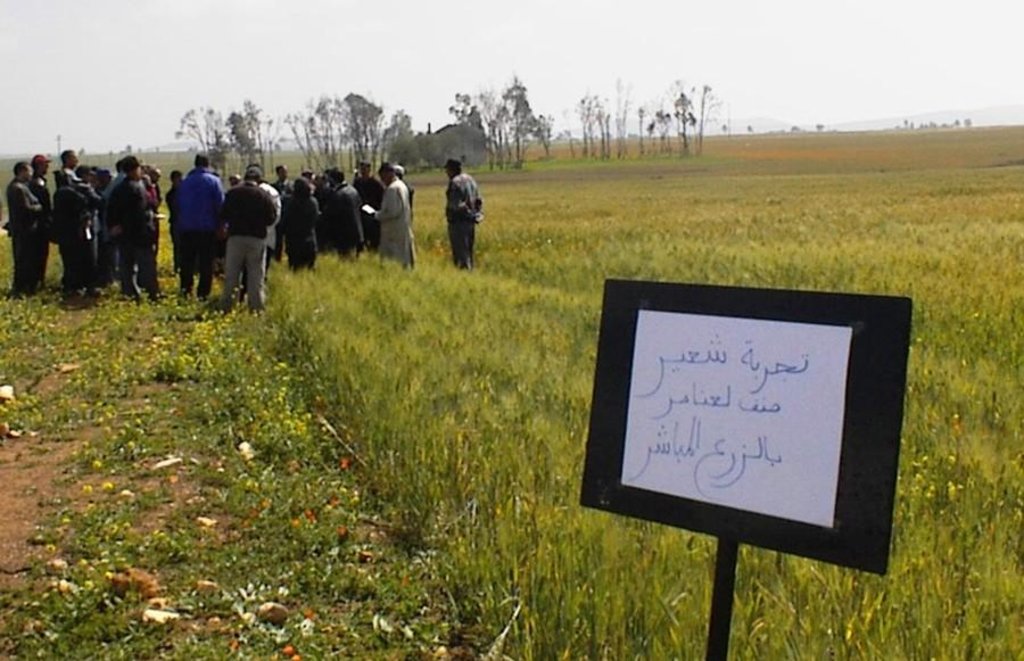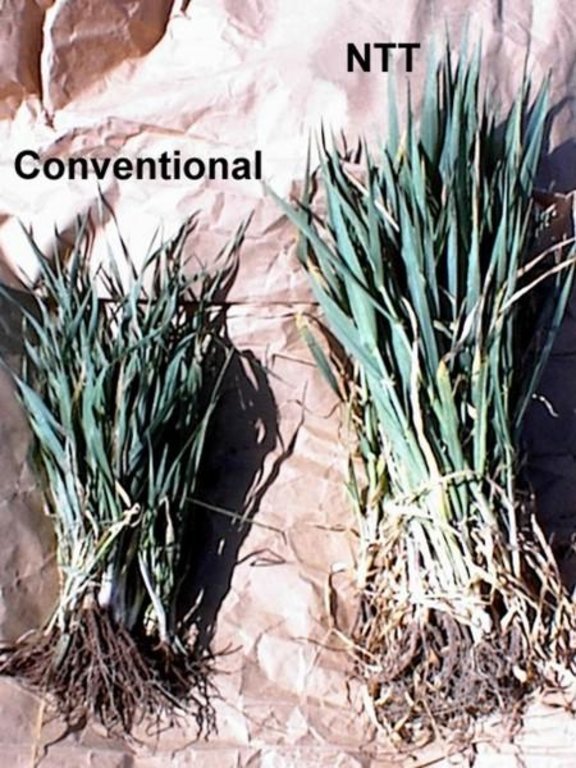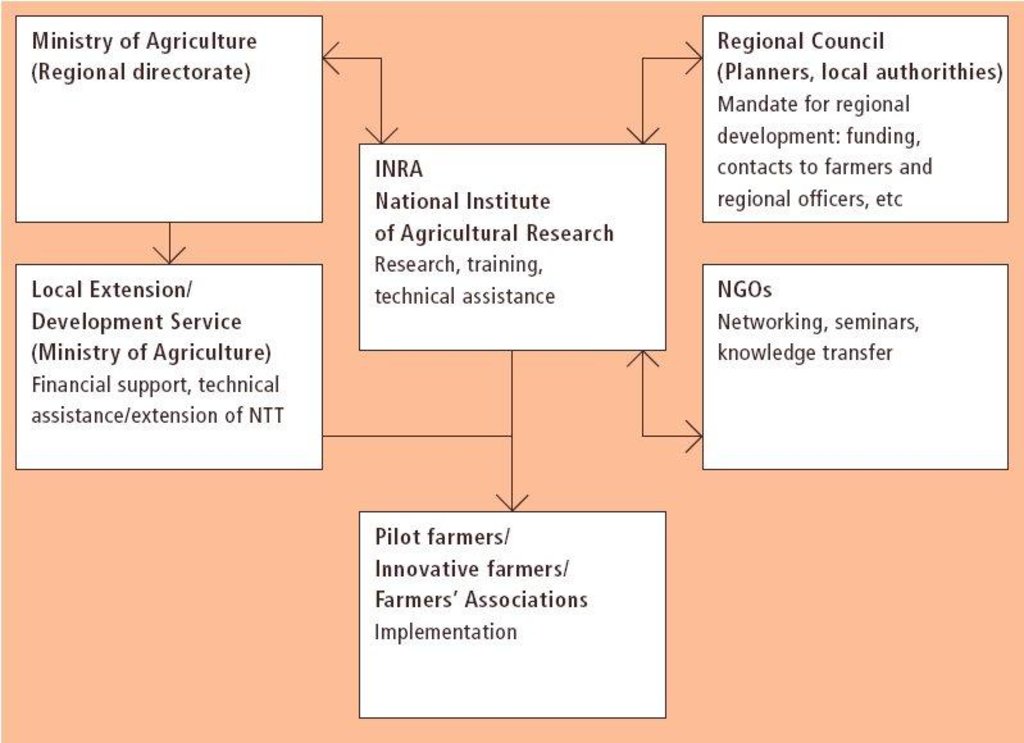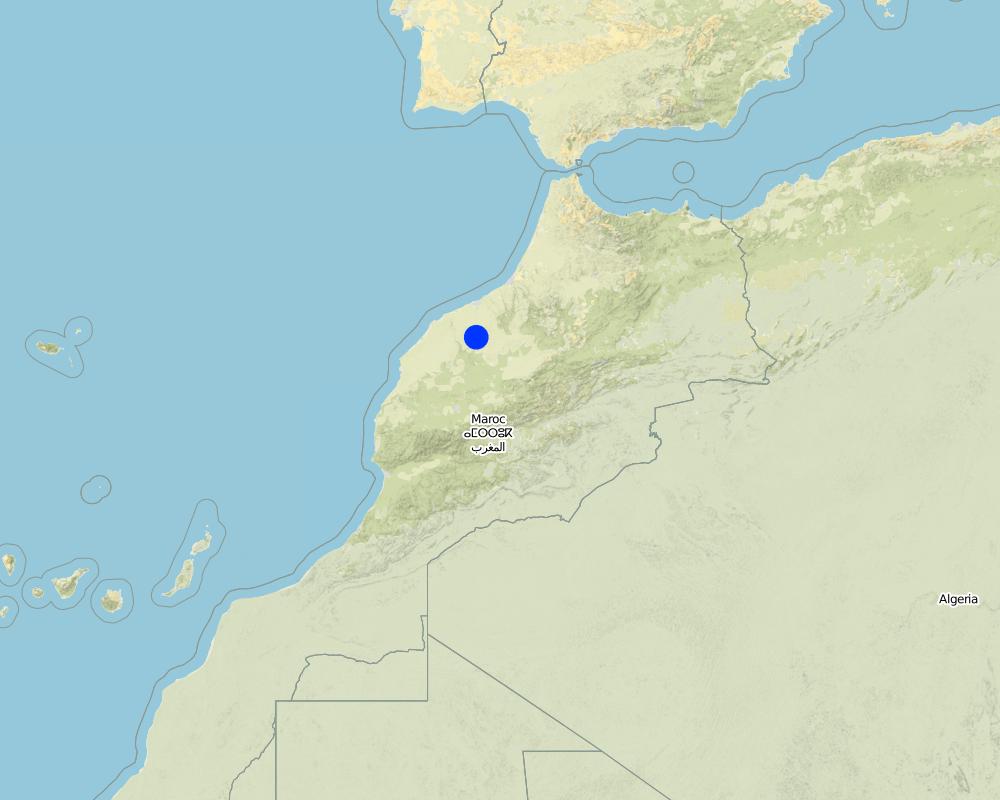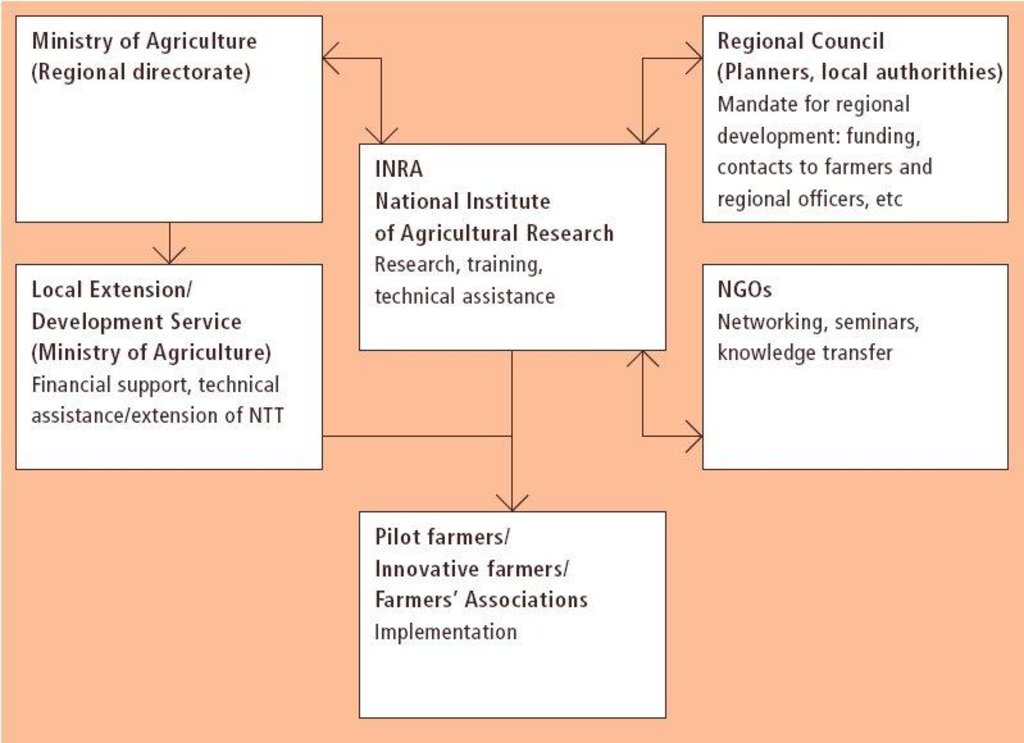Applied research and knowledge transfer [Marruecos]
- Creación:
- Actualización:
- Compilador: Rachid Mrabet
- Editor: –
- Revisores: David Streiff, Alexandra Gavilano, Deborah Niggli
approaches_2355 - Marruecos
Visualizar secciones
Expandir todo Colapsar todos1. Información general
1.2 Detalles de contacto de las personas de referencia e instituciones involucradas en la evaluación y la documentación del Enfoque
Nombre del proyecto que facilitó la documentación/ evaluación del Enfoque (si fuera relevante)
Book project: where the land is greener - Case Studies and Analysis of Soil and Water Conservation Initiatives Worldwide (where the land is greener)Nombre de la(s) institución(es) que facilitaron la documentación/ evaluación del Enfoque si fuera relevante)
Institut National de la Recherche Agronomique Morocco (INRA-Morocco) - Marruecos1.3 Condiciones referidas al uso de datos documentados mediante WOCAT
El compilador y la/s persona(s) de referencia claves aceptan las condiciones acerca del uso de los datos documentados mediante WOCAT :
Sí
1.4 Referencia/s al/los Cuestionario(s) de Tecnologías MST
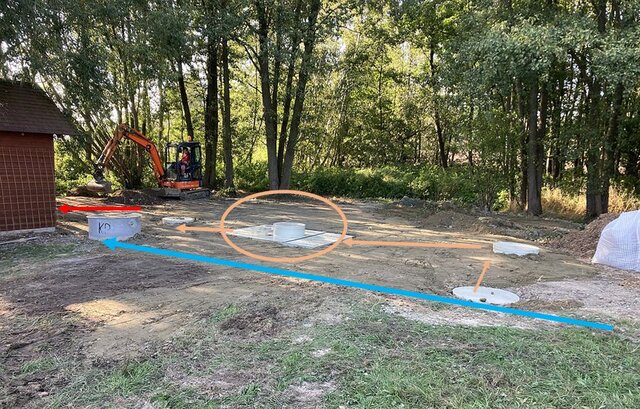
Drainage Biofilter [República Checa]
Biofilters or “bioreactors” connected to agricultural tile drains are relatively inexpensive and space-saving measures with considerable potential to improve the quality of drainage water.
- Compilador: Antonín Zajíček
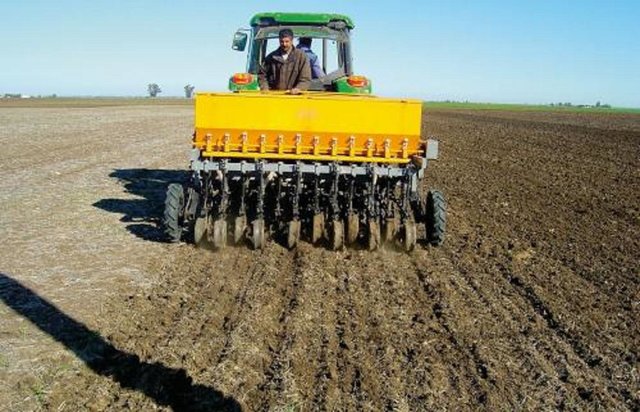
Технология нулевой обработки почвы [Marruecos]
Система нулевой обработки почвы с использованием растительных остатков для среднемасштабного производства пшеницы и ячменя
- Compilador: Rachid Mrabet
2. Descripción del Enfoque MST
2.1 Breve descripción del Enfoque
Innovative, cross-disciplinary community-based approach for development and transfer of no-till technology at the farm level.
2.2 Descripción detallada del Enfoque MST
Descripción detallada del Enfoque MST:
Aims / objectives: After 15 years of on-station research at the National Institute of Agricultural Research (INRA), testing and evaluation of no-till technology (NTT) at farm level started in 1997 with three pilot farmers. Recently two new projects were established to promote the introduction and adoption of NTT, in collaboration with the regional council and extension service of the Ministry of Agriculture (MoA). Fourteen pilot farmers are now involved in NTT. The overall purpose is to promote no-till technology to restore soils, improve production, mitigate drought, increase wealth and strengthen farmers??? organisations. NTT has been shown to be socially, economically and ecologically adapted to the local conditions. The approach has three stages: (1) Initiation: this includes basic research, strategic research and applied research; (2) Consolidation: planning is followed by detailed evaluation of technology adoption on farmers' fields; (3) Maturity: this involves the acceptance/spread of NTT with an increased number of farmers in the future.
Methods: INRA carries out research, information dissemination, gives training to technicians and farmers, and provides both technical assistance and monitoring. The regional council was convinced by the technology and now financially supports research activities, drill manufacture and extension of NTT. It also facilitates contacts with decision makers and farmers, and carries out evaluations. MoA development and extension services provide financial support, advice, technical assistance, and logistical support to farmers: they help to make the drills available. NGOs are engaged in the development of local/regional networks and farmers associations, as well as in funding and providing incentives. Farmers themselves are involved in the implementation, evaluation and dissemination of NTT. Participation, cross-discipline and bottom-up planning are key elements of the approach. Methods for implementation include long-term community on-farm trials, on-site training and information exchange, participation of stakeholders, information dissemination tools, and multi-directional knowledge flow. These are supplemented by intensive measurement/monitoring schemes, establishment of local/regional networks and farmers' association creation. On-the-job training is also provided.
2.3 Fotos del Enfoque
2.5 País/ región/ lugares donde el Enfoque fue aplicado
País:
Marruecos
Región/ Estado/ Provincia:
Chaouia/Ouardigha
Map
×2.6 Fechas de inicio y conclusión del Enfoque
Indique año del inicio:
1997
Comentarios:
The approach is now under application in this region but it is expected to apply in other regions of Morocco if funds are available
2.7 Tipo de Enfoque
- proyecto/ basado en un programa
2.8 Propósitos/ objetivos principales del Enfoque
The Approach focused mainly on SLM with other activities
- spread the no-till technology: thereby enhancing soil productivity and reducing susceptibility to land degradation. - develop the production of no-till drill machinery. - generally: to ameliorate the living conditions of rural people through enhancing expertise, capacities and knowledge of farmers in managing their soils and crops
The SLM Approach addressed the following problems: - previous absence of an integrated research and extension programme. - lack of technical options in a harsh and risky environment. - underlying problems of land degradation and drought periods
2.9 Condiciones que facilitan o impiden la implementación de la/s Tecnología/s aplicadas bajo el Enfoque
normas y valores sociales/ culturales/ religiosos
- impiden
Over-reliance on traditions in soil management; attitudes of farmers towards conventional tillage need challenging through information about alternatives.
Treatment through the SLM Approach: Training, video conferences, travelling workshops, etc.
disponibilidad/ acceso a recursos y servicios financieros
- impiden
Lack of specific funds, credit, loans for investment in new machinery
Treatment through the SLM Approach: Prioritise funds for no-tillage development
entorno institucional
- impiden
Extension service are not well incorporated in the approach due to lack of knowledge/information on no-tillage
Treatment through the SLM Approach: Special Training program; change of institutional thinking upon no-tillage systems
marco de trabajo legal (tenencia de tierra, derechos de uso de tierra y agua)
- impiden
lack of SWC-relatedl laws
Treatment through the SLM Approach: Recommendations on laws to cover SWC technologies.
The existing land ownership, land use rights / water rights moderately hindered the approach implementation small size of field requires integration of farmers for using no-till drill and other equipment
conocimiento de MST, acceso a apoyo técnico
- impiden
Lack of adapted machinery
Treatment through the SLM Approach: Promotion of no-till drill industry in Morocco
3. Participación y roles de las partes interesadas involucradas
3.1 Partes interesadas involucradas en el Enfoque y sus roles
- usuarios locales de tierras/ comunidades locales
- organizaciones comunitarias
Existing groups of land users
- especialistas MST/consejeros agrícolas
- gobierno nacional (planificadores, autoridades)
INRA
3.2 Involucramiento de los usuarios locales de tierras/ comunidades locales en las distintas fases del Enfoque
| Involucramiento de los usuarios locales de tierras/ comunidades locales | Especifique quién se involucró y describa las actividades | |
|---|---|---|
| iniciación/ motivación | pasivo | Mainly:public meetings; partly: workshops/seminars; open days |
| planificación | apoyo externo | Mainly: workshops/seminars; partly: public meetings |
| implementación | apoyo externo | Mainly: responsibility for minor steps; partly: casual labour |
| monitoreo y evaluación | apoyo externo | Mainly: interviews/questionnaires; partly: measurements/observations; field observations |
| Research | interactivo | on-farm; demonstration plots |
3.3 Flujograma (si estuviera disponible)
Descripción:
Institutional framework: Stakeholders and their roles: cross-disciplinary linkages between INRA, collaborating institutions and farmers.
3.4 La toma de decisiones en la selección de Tecnología(s) MST
Especifique quién decidió la selección de las Tecnología/ Tecnologías a implementarse:
- principalmente por especialistas MST en consulta con usuarios de tierras
Explique:
Recognition of no-tillage as a pertinent technology by decision-makers at local, regional or national level (specialists and politicians / leaders) is due to important station results as well as to international call for promoting this technology
Decisions on the method of implementing the SLM Technology were made by mainly by SLM specialists with consultation of land users. No-tillage technology was under research and on farm trials (3 farmers) and showed very marked benefits, particularly during droughty years
4. Apoyo técnico, fortalecimiento institucional y gestión del conocimiento
4.1 Construcción de capacidades / capacitación
¿Se proporcionó la capacitación a usuarios de tierras/ otras partes interesadas?
Sí
Especifique quién fue capacitado:
- usuarios de tierras
- extensionists/trainers, politicians/decision makers, planners
Forma de capacitación:
- en el contexto de trabajo
- áreas de demostración
- reuniones públicas
Temas avanzados:
no-tillage system, weed control, machinery, cropping systems, crop variety
4.2 Servicio de asesoría
¿Los usuarios de tierras tienen acceso a un servicio de asesoría?
Sí
Especifique si servicio proporcionado se realizó:
- en los campos de los usuarios de tierras
Describa/ comentarios:
Key elements: Participation of extension agents and farmers / observations (on the crop, weeds, disease, seeding condition, yield components), On-job training / open days (field days to make farmers and extension discuss questions / remarks regarding no till technology, Monitoring/Participatory; 1) Advisory service was carried out through: government's existing extension system 2) Advisory service was carried out through: government's existing extension system; Extension staff: mainly government employees 3) Target groups for extension: land users; Activities: demonstration, field days, traveling workshops
Advisory service is inadequate to ensure the continuation of land conservation activities; Extension Agents need training
4.3 Fortalecimiento institucional (desarrollo institucional)
¿Se establecieron o fortalecieron instituciones mediante el Enfoque?
- sí, moderadamente
Especifique el nivel o los niveles en los que se fortalecieron o establecieron las instituciones:
- local
Especifique el tipo de apoyo:
- financiero
- construcción de capacidades/ entrenamiento
4.4 Monitoreo y evaluación
¿El monitoreo y la evaluación forman parte del Enfoque?
Sí
Comentarios:
Bio-physical aspects were regular monitored by 0 through measurements
Technical aspects were regular monitored by 0 through measurements
Socio-cultural aspects were ad hoc monitored by 0 through observations
Economic / production aspects were regular monitored by 0 through measurements;
Area treated aspects were ad hoc monitored by 0 through observations
No. of land users involved aspects were regular monitored by 0 through measurements
Management of Approach aspects were ad hoc monitored by 0 through observations;
There were no changes in the Approach as a result of monitoring and evaluation: The evaluation is still in process: thus too early to state what changes are likely.
4.5 Investigación
¿La investigación formó parte del Enfoque?
Sí
Especifique los temas:
- sociología
- tecnología
- agronomy
Proporcione detalles adicionales e indique quién hizo la investigación:
crop performance, soil analysis, no-till drill design and evaluation, socio-economic indexes of NTT.
Research was carried out both on station and on-farm
5. Financiamiento y apoyo material externo
5.1 Presupuesto anual para el componente MST del Enfoque
Si no se conoce el presupuesto anual preciso, indique el rango:
- 100,000-1,000,000
Comentarios (ej. fuentes principales de financiamiento/ donantes principales):
Approach costs were met by the following donors: government (national - INRA/Ministry): 80.0%; local community / land user(s) (Regional Council): 20.0%
5.2 Apoyo financiero/material proporcionado a los usuarios de tierras
¿Los usuarios de tierras recibieron financiamiento/ apoyo material para implementar la Tecnología/ Tecnologías? :
Sí
5.3 Subsidios para insumos específicos (incluyendo mano de obra)
- equipo
| Especifique qué insumos se subsidiaron | En qué grado | Especifique los subsidios |
|---|---|---|
| maquinaria | totalmente financiado | |
- agrícola
| Especifique qué insumos se subsidiaron | En qué grado | Especifique los subsidios |
|---|---|---|
| totalmente financiado | ||
| totalmente financiado | ||
| biocides | totalmente financiado | |
Si la mano de obra de usuarios de tierras fue un insumo sustancial, ¿fue:
- voluntario?
5.4 Crédito
¿Se proporcionó crédito bajo el Enfoque para actividades MST?
Sí
Especifique las condiciones (tasa de interés el apoyo, amortización, etc.):
repayment conditions: To promote the acceptance of the technology, farmers receive a 50% subsidy on the purchase price of the no-till drill (as is the general case for all types of drills)..
6. Análisis de impacto y comentarios de conclusión
6.1 Impactos del Enfoque
¿El Enfoque ayudó a los usuarios de tierras a implementar y mantener Tecnologías MST?
- No
- Sí, un poco
- Sí, moderadamente
- Sí, mucho
Better use of the rainwater stored in the soil by crops leads to improvement of soil and water management: increase in soil organic matter has multiple benefits.
¿El Enfoque mejoró cuestiones de tenencia de tierra/ derechos de usuarios que obstaculizaron la implementación de la Tecnologías MST?
- No
- Sí, un poco
- Sí, moderadamente
- Sí, mucho
The land is a private property and can not be affected by no-tillage but with no-tillage farmers can rent or buy new lands for adoption of more no-tillage.
Did other land users / projects adopt the Approach?
- No
- Sí, un poco
- Sí, moderadamente
- Sí, mucho
This no-till system can now be considered for several different agroecological situations where a similar approach can be applied (e.g. flood control project, agro-forestry program, soil restoration project, etc.).
6.3 Sostenibilidad de las actividades del Enfoque
¿Pueden los usuarios de tierras sostener lo que se implementó mediante el Enfoque (sin apoyo externo)?
- sí
Si respondió que sí, describa cómo:
Progress can continue to be made, assuming that training, subsidised drills, and the creation of farmers' organisations all persist.
6.4 Fortalezas/ ventajas del Enfoque
| Fuerzas/ ventajas/ oportunidades desde la perspectiva del usuario de la tierra |
|---|
| Adaptability to farmers needs/constraints (How to sustain/ enhance this strength: Include integration of livestock and crops. This should be helpful to pursue in the approach) |
| Farmer's decisions, opinions, critics (How to sustain/ enhance this strength: Bottom-up maintained (gradually)) |
| Incentives make it possible for land users to experiment with a new cultivation system (How to sustain/ enhance this strength: Diversification of incentives: eg reduction in seed prices and herbicides for NTT farmers; award - NTT best producers; reduction in interest rates for NTT farmers (for credits or loans); special NTT training courses.) |
| Fuerzas/ ventajas/ oportunidades desde la perspectiva del compilador o de otra persona de referencia clave |
|---|
| The NTT project has integrated several institutions -which is unique in Morocco. Now research, extension, community and farmers are working together towards the same objective (How to sustain/ enhance this strength: Further develop, refine and spread NTT) |
| NGOs development: the association of NTT farmers and environmental clubs are important for spreading NTT and for re-enforcing the importance of NTT amongst government officers and decision makers (How to sustain/ enhance this strength: special NGOs should be encouraged to respect soils, nature, environment) |
| Cross-discipline: involving land users, research and extension agents has helped in building up an approach suitable for the local conditions. (How to sustain/ enhance this strength: The working teams received also incentives and recognictions) |
| research connected to extension (How to sustain/ enhance this strength: research should be developed to get continuous measurements/information and to search new indexes and means) |
| Progressive implementation of a 'bottom-up' approach; integration of farmers' decisions, opinions and criticisms (How to sustain/ enhance this strength: Farmers and their association are involved gradually in the approach and their critics, comments, feedbacks respected) |
6.5 Debilidades/ desventajas del Enfoque y formas de sobreponerse a ellos
| Debilidades/ desventajas/ riesgos desde la perspectiva del usuario de la tierra | ¿Cómo sobreponerse a ellas? |
|---|---|
| Information availability: up to now information and communication on NTT is scarce | intensify training of trainees |
| In some situations (farmers with very low incomes), the need for external inputs such as herbicides, seeds, fertilizers and drills may retard implementation of NTT | Incentives should be maintained for a short period and supplemented by credit systems. |
| Debilidades/ desventajas/ riesgos desde la perspectiva del compilador o de otra persona de referencia clave | ¿Cómo sobreponerse a ellas? |
|---|---|
| Direct incentives: there is always a risk that when eliminating these incentives, farmers will abandon NTT | Eliminate incentives gradually and replace with loans and credits. |
| The programme's duration is currently too short to overcome resistance (to new technology adoption) and to address economic constraints of farmers | A long term programme is needed to increase acceptance among farmers. |
7. Referencias y vínculos
7.1 Métodos/ fuentes de información
- visitas de campo, encuestas de campo
- entrevistas con usuarios de tierras
7.2 Referencias a publicaciones disponibles
Título, autor, año, ISBN:
Wall et al, 2002, Institutional aspects of conservation agriculture, International workshop on conservation agriculture for sustainable wheat production, 14-18, october 2002, Tastikent, Usbekistan
¿Dónde se halla disponible? ¿Costo?
p.wall@cgiar.org
Título, autor, año, ISBN:
Segry, L.; Bouzinac, S and Pieri, C. 1991: An Approach to the development of sustainable farming systems. World echnical papaer N-2, ISBRAM proceedings 1991
Vínculos y módulos
Expandir todo Colapsar todosVínculos

Drainage Biofilter [República Checa]
Biofilters or “bioreactors” connected to agricultural tile drains are relatively inexpensive and space-saving measures with considerable potential to improve the quality of drainage water.
- Compilador: Antonín Zajíček

Технология нулевой обработки почвы [Marruecos]
Система нулевой обработки почвы с использованием растительных остатков для среднемасштабного производства пшеницы и ячменя
- Compilador: Rachid Mrabet
Módulos
No se hallaron módulos


